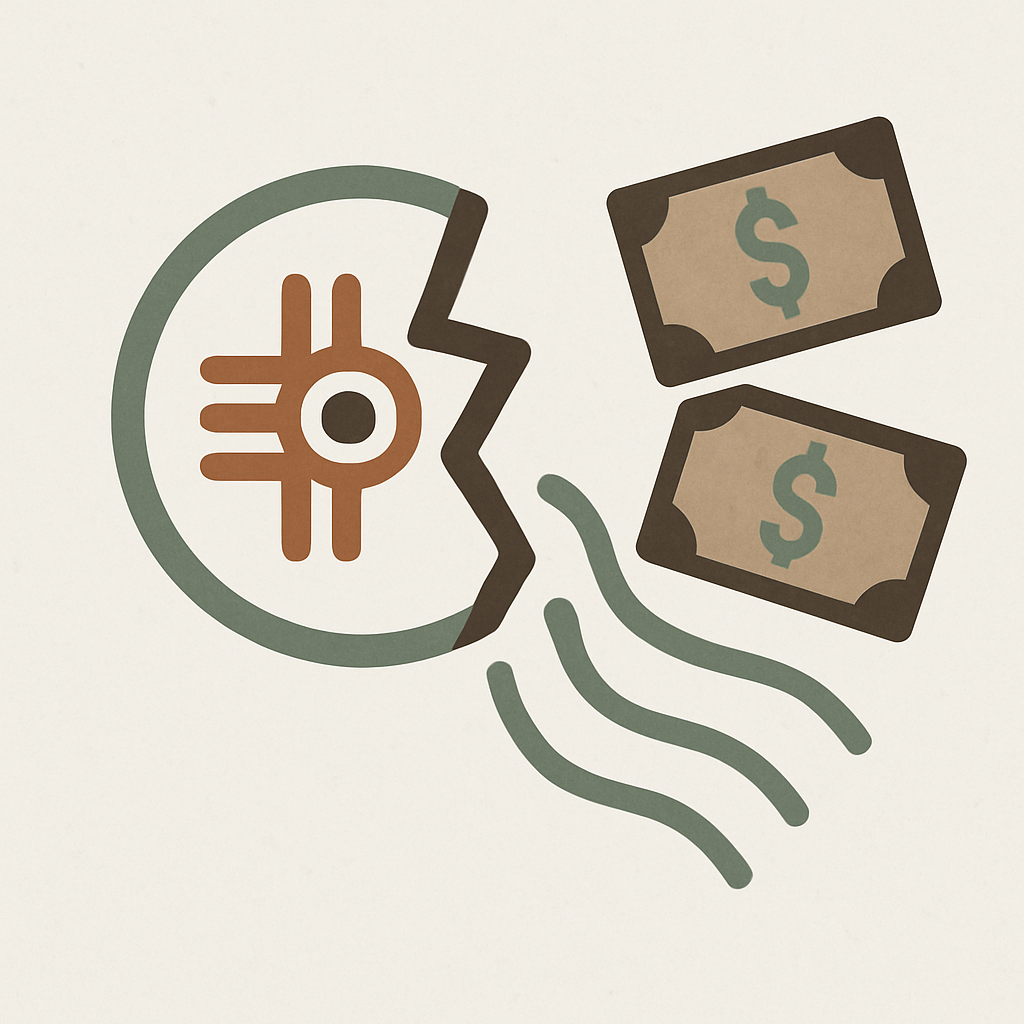Appreciation vs. Appropriation
Embrace the critical distinction between respectful engagement and harmful extraction. This guide empowers you to understand the profound impact, the legal landscape, and the actionable path forward for ethical commerce and genuine cultural exchange.
The Core of the Matter
The line between celebrating a culture and exploiting it is defined by context, power, permission, and respect. This section breaks down the fundamental differences between harmful appropriation and meaningful appreciation, challenging you to recognize the nuances and make informed choices.
✗Cultural Appropriation
The adoption of cultural elements by a dominant culture from a minority culture that has been systematically oppressed by that same dominant group. It's an act rooted in a power imbalance.
-
 Commodification & Erasure: Sacred or significant items are stripped of their meaning and sold as trends, trivializing their cultural importance.
Commodification & Erasure: Sacred or significant items are stripped of their meaning and sold as trends, trivializing their cultural importance. -
 Lack of Consent or Credit: Elements are taken without permission from or acknowledgment of the source community.
Lack of Consent or Credit: Elements are taken without permission from or acknowledgment of the source community. -
 Economic Harm: Profit flows to the dominant group, often displacing income from the Indigenous artists and creators who are the source of the culture.
Economic Harm: Profit flows to the dominant group, often displacing income from the Indigenous artists and creators who are the source of the culture.
✓Cultural Appreciation
A genuine and active effort to learn about, honor, and respectfully engage with another culture, centered on building reciprocal relationships and mutual understanding.
-
 Permission & Context: Engagement happens with consent, credit, and a deep understanding of the cultural significance of the elements being shared.
Permission & Context: Engagement happens with consent, credit, and a deep understanding of the cultural significance of the elements being shared. -
 Ethical Sourcing & Support: Prioritizes buying directly from Indigenous artists and Indigenous-owned businesses.
Ethical Sourcing & Support: Prioritizes buying directly from Indigenous artists and Indigenous-owned businesses. -
 Reciprocity: Benefits—economic, social, or otherwise—flow back to the source community, creating a mutually beneficial exchange.
Reciprocity: Benefits—economic, social, or otherwise—flow back to the source community, creating a mutually beneficial exchange.
The High Cost of Inauthenticity
The trade in counterfeit "Native-inspired" goods is not a victimless crime. It is a multi-million dollar industry that directly undermines Indigenous economies, displaces artists, and erodes consumer trust, creating a ripple effect across interconnected cultural systems.
Market Under Siege
The market for authentic Indigenous art is substantial, but it is constantly fighting a flood of fakes. These inauthentic goods suppress prices and siphon away vital income from artists and their communities.
Up to 80% of all goods sold as "Indian made" jewelry may be counterfeit.
Source: Sen. Tom Udall, via High Country News
"Cultural integrity is essential for true economic empowerment."
- Ancient Trades Philosophy
A Pattern of Misappropriation
Major brands in fast fashion, luxury, and retail have repeatedly been called out for using Indigenous designs without permission, credit, or compensation. Explore these real-world examples to understand appropriation in practice. Click a card to learn more.
The Legal Guardrails
The IACA is a federal "truth-in-advertising" law designed to prevent fraudulent competition. However, its history, definitions, and enforcement challenges reveal the limitations of legal protection alone, underscoring the interconnectedness of legal frameworks and cultural preservation.
1935
The Original Act
Passed during the Great Depression, the first IACA was created to promote economic welfare but proved toothless, with weak penalties and no prosecutions for over 50 years.
1990
The Modern IACA
In response to a flood of counterfeits, the Act was amended with strong penalties, making it a federal crime to falsely suggest a product is "Indian produced".
The Core Dilemma
The "Sovereignty" Problem
The Act's narrow, government-defined standard of who qualifies as an "Indian" artist excludes thousands of non-enrolled artists with Indigenous ancestry, infringing on tribal sovereignty and creating deep divisions.
Today
Enforcement & Online Gaps
Chronic underfunding and the explosion of e-commerce make enforcement difficult. The law focuses on consumer fraud, offering little protection against the cultural harm of "Native-inspired" goods that avoid direct legal violations.
The Path to Ethical Engagement
Moving from appropriation to appreciation is an active process. It requires a commitment to a framework of respect, reciprocity, and relationship-building. Here are the key principles for consumers and brands alike to foster resilience and genuine cultural exchange.
A Framework for Appreciation
Permission
Seek consent from the source community or artist. Respect the answer, especially if it's "no."
Credit
Clearly and accurately attribute the work to the specific artist and their community. Avoid generic labels.
Context
Take the time to understand the cultural significance, history, and meaning behind the element you are engaging with.
Compensation
Ensure the original creators are fairly and equitably compensated for their knowledge and labor. Buy directly from Indigenous artists whenever possible.
Ready to Engage Ethically?
Explore how Ancient Trades fosters genuine appreciation and supports Indigenous communities. Join us in building a more equitable and respectful knowledge economy.
Discover Our Services Partner With Us